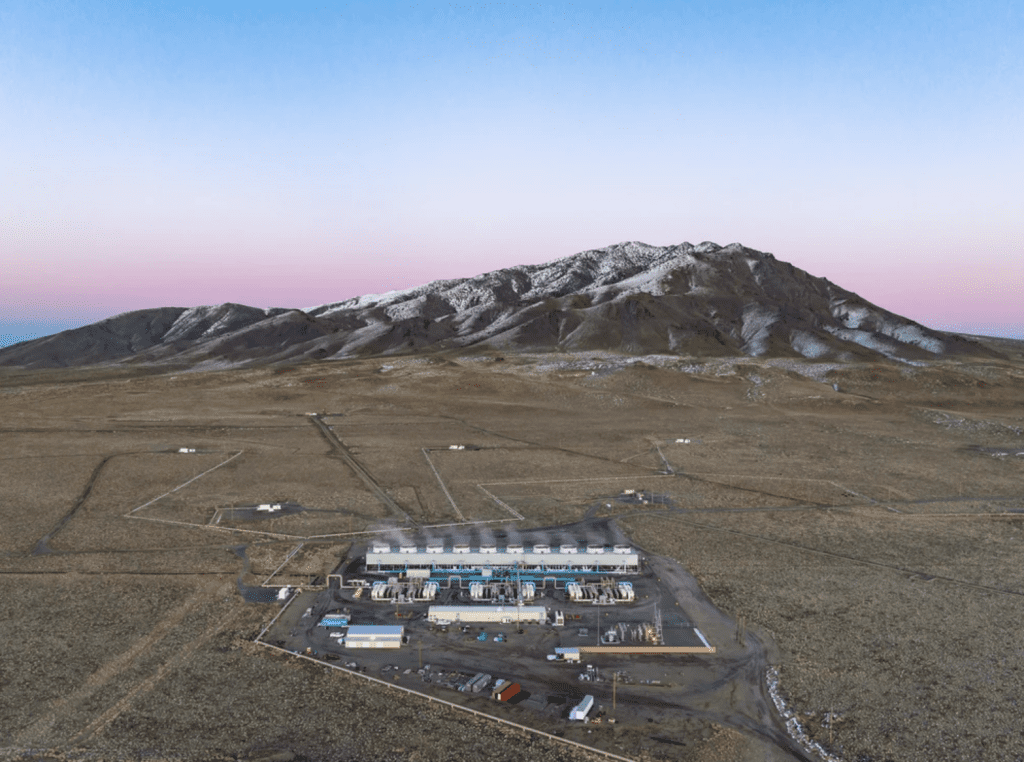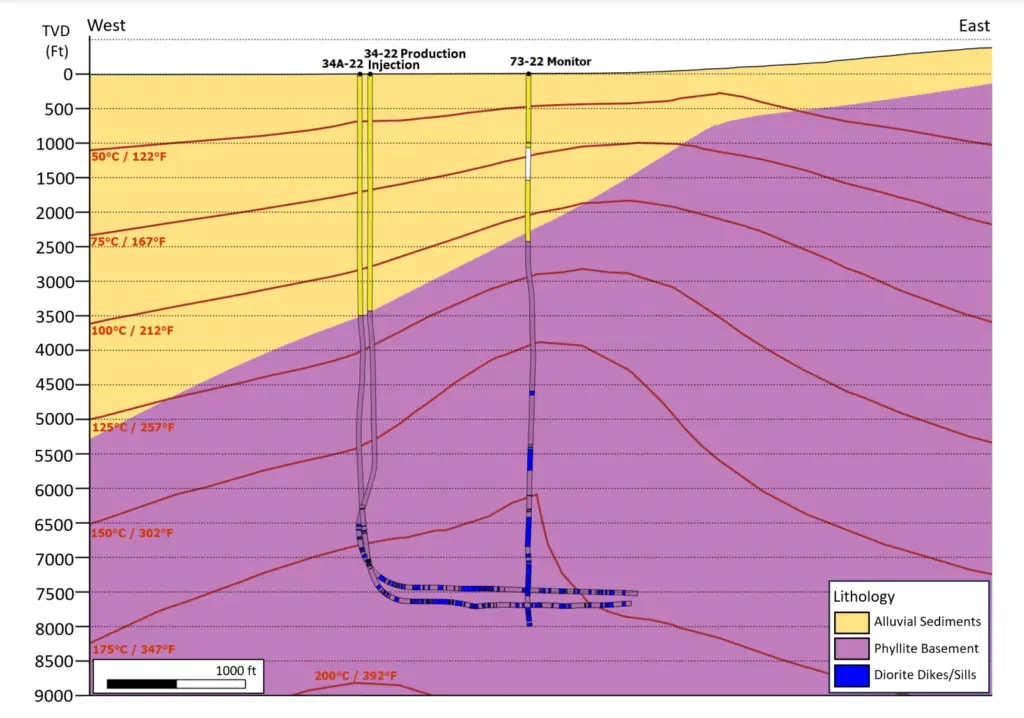Innovative Enhanced Geothermal System Begins Operations in Nevada
A pioneering 3.5-MW enhanced geothermal system (EGS) in northern Nevada that demonstrated the ability to drill, complete, and operate horizontal wells is now operational.
Project Red, co-developed by Fervo Energy and Google under a partnership forged in 2021 under the “world’s first corporate agreement to develop an enhanced geothermal power project,” is supplying power to the local grid that serves Google’s data centers in Nevada, Michael Terrell, Google senior director of Energy and Climate, wrote in a Nov. 28 blog post.

A Full-Scale Commercial EGS Pilot
The full-scale commercial EGS pilot has been much watched, given its innovative horizontal doublet well system design.
While geothermal resources naturally occur everywhere on Earth, harvesting them cost-effectively has been a challenge, owing to variability in rock temperature, permeability, and other conditions. EGS, which relies on man-made reservoirs drilled to depths of 3 to 10 kilometers, could potentially change that. However, though EGS has been explored since the 1970s, efforts to develop EGS have remained small in scale, mainly owing to insufficient reservoir volume, difficulty with drilling, and induced seismicity.
Located in the Blue Mountain geothermal field in north-central Nevada, Project Red is a “nearfield EGS” project that is “designed to deliver an uplift in high-temperature geothermal flow rates” to increase the power capacity of Blue Mountain Power’s 49.5 MW Faulkner 1 geothermal power plant.
The system comprises an injection and production well pair drilled within a high-temperature, hard-rock geothermal formation. According to Fervo, the lateral sections of the wells were drilled leveraging technology innovations from the unconventional oil and gas industry with a 9 7/8-inch hole size, completed with 7-inch casing, and extended about 3,250 feet horizontally. They reach a maximum measured temperature of 376F (191C).

In July, the Houston-based geothermal technology firm reported that a 37-day crossflow production test performed over April and May 2023 confirmed that the EGS wells were connected hydraulically by a highly conductive fracture network. The system also utilized a “modern multistage, plug-and-perforate stimulation treatment design with proppant” to enhance the permeability of both horizontal wells.
In addition, its in-well fiber optics data enabled Fervo to observe key “downhole behavior in real-time before, during, and after each stage,” providing useful information “on the stimulation treatment effectiveness and the downhole conditions that various tools are exposed to.” Fervo also noted it implemented “an induced seismicity mitigation protocol” following best practices established by the Department of Energy and completed the project without incident.
“During production testing, the system achieved flow rates of up to 63 [liters per second (L/s)], production temperatures of up to 336F, and a peak power production of 3.5 MW electric power equivalent,” wrote Fervo CEO Tim Latimer and Fervo Co-Founder Jack Hunter Norbeck in a non-peer-reviewed research article published in July. “Based on a review of historic EGS projects, Fervo’s horizontal doublet well design is the most productive EGS system to date in terms of flow rate and electric power equivalent.”
Demonstration Showed No Major Technical Barriers to Deploying Horizontal EGS
Fervo, one of the first companies to successfully drill a horizontal well pair for commercial geothermal production, has said the successful completion of the project demonstrates that “no major technical barriers exist to deploying horizontal EGS systems in similar metasedimentary or igneous formations up to temperatures of approximately 400F.”
In addition, numerical reservoir simulation models calibrated with the project’s field data suggest a “clear innovation pathway to increasing the power capacity up to 8 MW of electric power per production well.” That meets or exceeds performance criteria outlined in Advanced Scenario the National Renewable Energy Laboratory’s 2023 Annual Technology Bulletin for geothermal energy, it notes.
The data could also “enable rapid advancement in geothermal deployment,” Fervo suggests. In the summer of 2023, the company broke ground on its first greenfield development southwest of Utah, next to the DOE’s Frontier Observatory for Research in Geothermal Energy (FORGE). “Revenue and learnings from Fervo’s Utah project will go toward the development of other projects in new geographies,” it said.
In September 2023, meanwhile, the company broke ground on its next EGS project, the 400-MW Cape Station, in Beaver County, Utah. The project is expected to begin delivering power to the grid in 2026 and reach full-scale production in 2028.
According to Google’s Terrell, the project presents new opportunities for reliable, clean power. Google committed to the project owing to the company’s “ambitious goal to operate our data centers and office campuses on 24/7 carbon-free energy (CFE) on every grid where we operate by 2030, with the ultimate aim of accelerating the decarbonization of the world’s electricity systems,” he wrote.
In this video, Google shares how Project Red works and how the project could help power its operations in Nevada. Courtesy: Google
“The result is a geothermal plant that can produce round-the-clock CFE, using less land than other clean energy sources and drawing on skills, knowledge, and supply chains that exist in other industries,” he added. “From our early commitment to support the project’s development to its successful completion, we’ve worked closely with Fervo to overcome obstacles and prove that this technology can work.”
While Google began its CFE journey with Project Red, “there’s potential for geothermal to grow,” Terrell predicted. “We recently announced a partnership with Project InnerSpace, a leading non-profit organization dedicated to the global development of geothermal energy, to accelerate the adoption of geothermal energy.”
—Sonal Patel is a POWER senior associate editor (@sonalcpatel, @POWERmagazine).